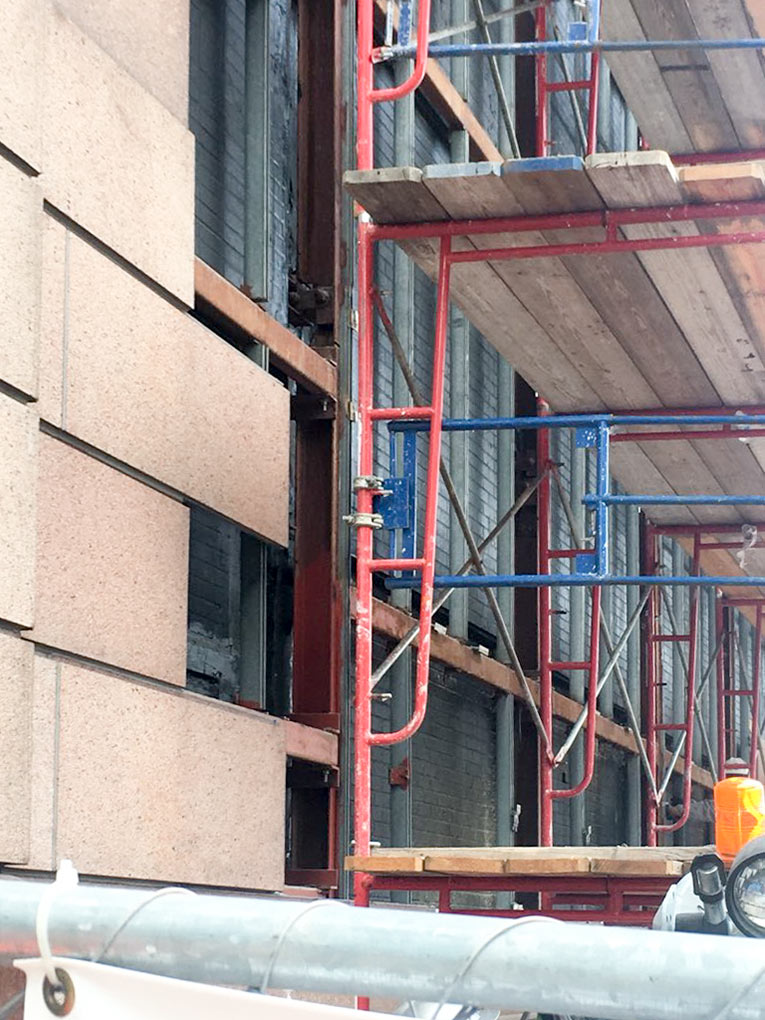
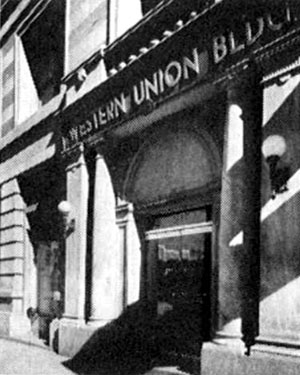
The brick Western Union building shown in black and white on the corner of Louisiana and Capitol streets vanished from the downtown landscape in 1983 — although it didn’t go anywhere. Because the longtime regional switching center was too expensive to move, architect Philip Johnson simply designed his much larger landmark — then-called RepublicBank Center Center — around it, sealing the telecom structure off from public view. Inside the skyscraper’s lobby, the dead building takes up nearly a quarter of the floor space, with its west corner wedged into the Bank of America Center’s own, catty-corner to Jones Hall.
Last year, renovations were announced that’d add a new restaurant and cafe in the doorless and windowless portion of the Bank of America Center’s ground floor where the building is entombed. Crews began stripping away portions of the office building’s exterior earlier this year in order to make room for new openings to access the eateries. They’ve now busted all the way through the red granite, revealing the decades-older facade that lies behind it.
It’s still mostly obscured by the scaffolding that looms over the Capitol St. sidewalk :


 “Collegiate Cleaners is now Rice Village’s oldest business, by both age and location.” [
“Collegiate Cleaners is now Rice Village’s oldest business, by both age and location.” [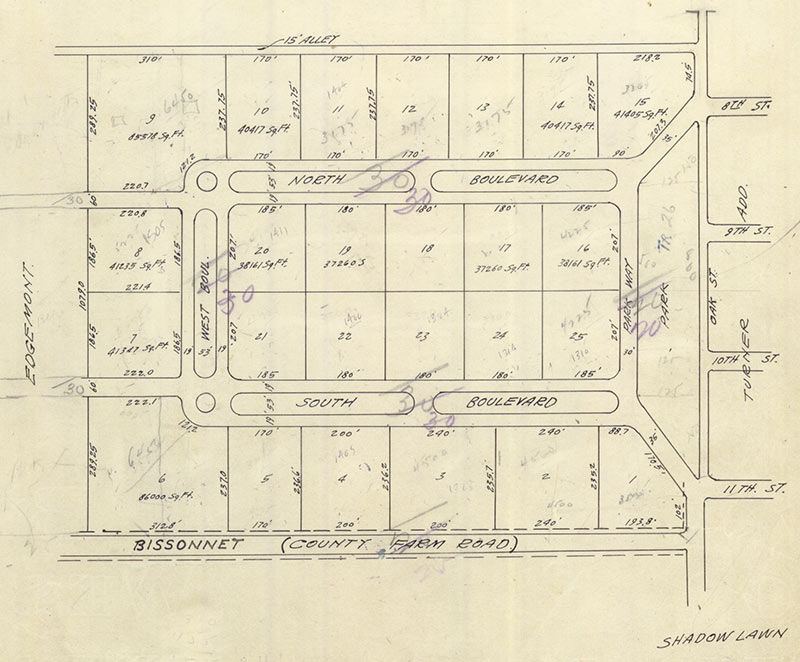 “In a way, this is just the latest battle in a hundred year old fight. On a Preservation Houston tour of Broadacres (where we trespassed all over the esplanades), it was pointed out that the neighborhood was originally designed as a closed loop with the only access to the city via Parkway to the east. Houston, however, viewed the streets as public and forced the developers to cede ROW through the lots on the western side of the loop to connect North and South Blvds to their counterparts in the west. This is why North and South Blvds pinch weirdly right around West Blvd. — when you’re ceding expensive land, you only give the minimum required. . . .” [
“In a way, this is just the latest battle in a hundred year old fight. On a Preservation Houston tour of Broadacres (where we trespassed all over the esplanades), it was pointed out that the neighborhood was originally designed as a closed loop with the only access to the city via Parkway to the east. Houston, however, viewed the streets as public and forced the developers to cede ROW through the lots on the western side of the loop to connect North and South Blvds to their counterparts in the west. This is why North and South Blvds pinch weirdly right around West Blvd. — when you’re ceding expensive land, you only give the minimum required. . . .” [ “. . . Back in the 1920s, the 4th Ward was Houston’s version of Harlem during the Harlem Renaissance. Racist white city officials did not want a thriving African American community right next to a rapidly growing downtown and demolished a huge section of the community to build public housing (the decisive blow to the 4th ward would be extending the freeway through the community, effectively cutting it off from downtown). APV was designed by MacKie & Kamrath and was intended to be public housing. It ended up as all white housing for veterans. Eventually, African Americans moved in as whites moved out and headed to the suburbs. In the ’70s, as the City was booming again, City officials wanted to demolish APV as it, and much of the rest of the 4th ward, was falling into disrepair. Every single move after that was just controversy on top of controversy. The City was accused of moving Vietnamese immigrants into APV to dilute the number of African Americans who opposed demolition. Then, there was a big master plan project proposed to redevelop the entire area, a court case over demolition of APV and designation of APV and the Fourth Ward on the national register of historic places. In the end, more than half was demoed and replaced with new apartments in 2000. The original MacKie & Kamrath designed buildings are architecturally and historically significant. But, like the history of the 4th ward, Houston’s transient population knows very little about the trials and tribulations behind APV. So, it is an easy target to troll for hate on preservationists.” [
“. . . Back in the 1920s, the 4th Ward was Houston’s version of Harlem during the Harlem Renaissance. Racist white city officials did not want a thriving African American community right next to a rapidly growing downtown and demolished a huge section of the community to build public housing (the decisive blow to the 4th ward would be extending the freeway through the community, effectively cutting it off from downtown). APV was designed by MacKie & Kamrath and was intended to be public housing. It ended up as all white housing for veterans. Eventually, African Americans moved in as whites moved out and headed to the suburbs. In the ’70s, as the City was booming again, City officials wanted to demolish APV as it, and much of the rest of the 4th ward, was falling into disrepair. Every single move after that was just controversy on top of controversy. The City was accused of moving Vietnamese immigrants into APV to dilute the number of African Americans who opposed demolition. Then, there was a big master plan project proposed to redevelop the entire area, a court case over demolition of APV and designation of APV and the Fourth Ward on the national register of historic places. In the end, more than half was demoed and replaced with new apartments in 2000. The original MacKie & Kamrath designed buildings are architecturally and historically significant. But, like the history of the 4th ward, Houston’s transient population knows very little about the trials and tribulations behind APV. So, it is an easy target to troll for hate on preservationists.” [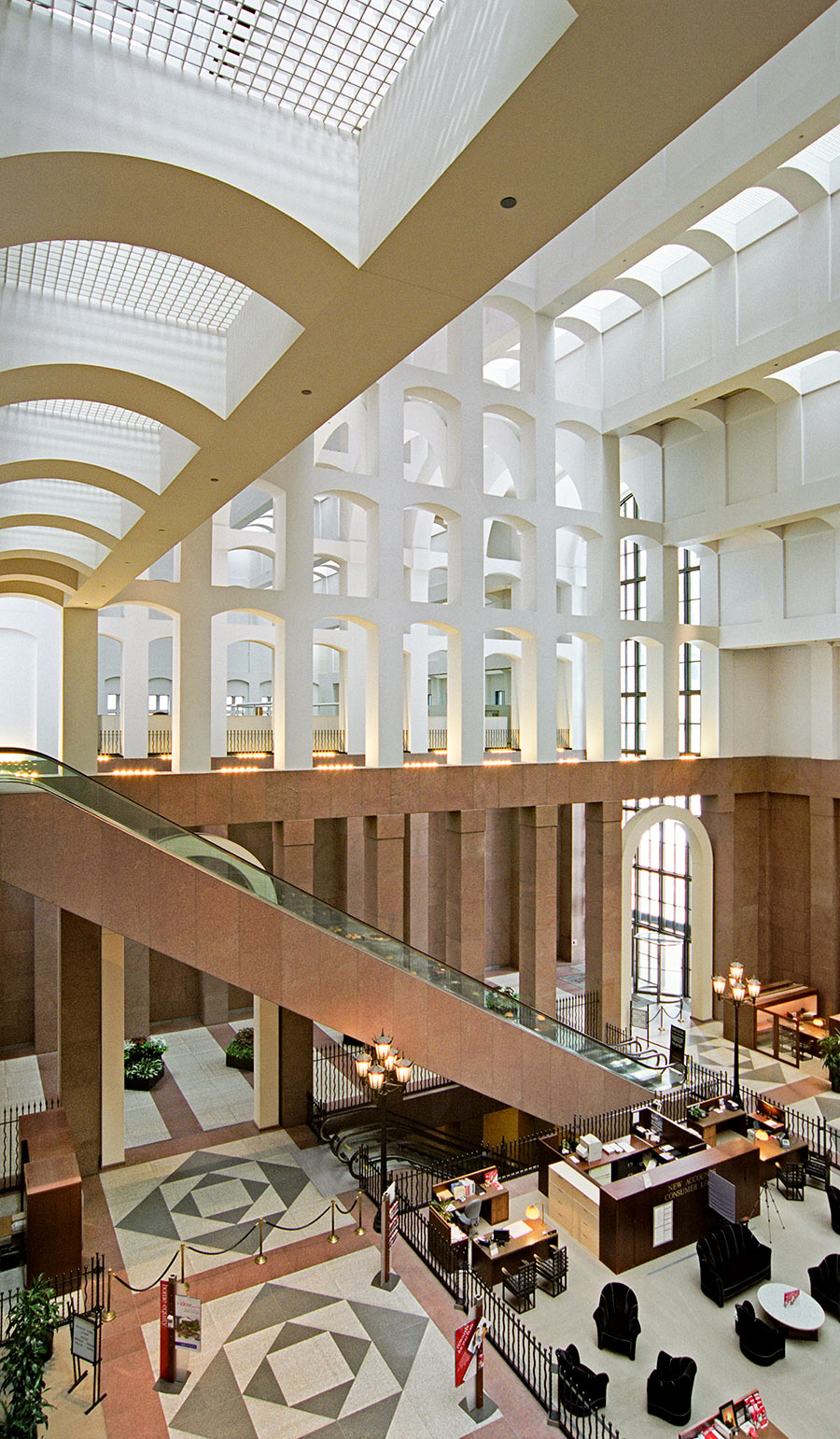 “. . . Soon after I moved to Houston, I had money wired to me at this Western Union building (this would have been November of ’81). Didn’t make much of an impression on me. I think the façade had been stripped off, and the office itself was shabby.
I started work at HL&P in February of ’82, and our offices looked directly across the street to the construction site. The ‘big pour’ for the concrete foundation slab was quite an event. Starting very early on a Sunday morning, a seemingly endless parade of mixer trucks crept down Louisiana Street. Obviously, most of the block had been excavated, and the lot where Western Union sat (well, sits) was supported by a series of diagonal beams. After seeing the engineering required to save that lot, the lower ‘banking hall’ design for that side of the building makes sense.
While construction continued, the south side of the WU was given a fresh coat of paint with a large graphic proclaiming ‘A Gerald R. Hines Project‘ (or some such thing), which doubtlessly is still there, virtually unseen for 35 years.” [
“. . . Soon after I moved to Houston, I had money wired to me at this Western Union building (this would have been November of ’81). Didn’t make much of an impression on me. I think the façade had been stripped off, and the office itself was shabby.
I started work at HL&P in February of ’82, and our offices looked directly across the street to the construction site. The ‘big pour’ for the concrete foundation slab was quite an event. Starting very early on a Sunday morning, a seemingly endless parade of mixer trucks crept down Louisiana Street. Obviously, most of the block had been excavated, and the lot where Western Union sat (well, sits) was supported by a series of diagonal beams. After seeing the engineering required to save that lot, the lower ‘banking hall’ design for that side of the building makes sense.
While construction continued, the south side of the WU was given a fresh coat of paint with a large graphic proclaiming ‘A Gerald R. Hines Project‘ (or some such thing), which doubtlessly is still there, virtually unseen for 35 years.” [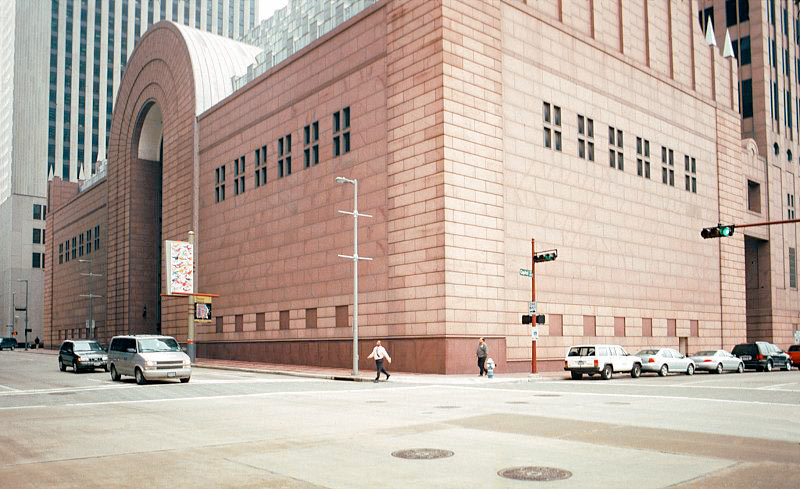 “The Western Union building is only 2 stories. It is completely intact, tar and gravel roof included. The 3rd floor Mezzanine of the BOA building was built clear span over the top of the old WU building. The windows you see on the outside are for the mezzanine. As for the ‘gap’ between the buildings, you can walk/crawl around most of it. Some areas between the buildings are big enough that you could set a desk in there, some are tight enough to induce panic. There is basically nothing left from WU in there, but there were still some curious old artifacts last time I was in there. I worked for the building for a while, and led a few of the tours of architects/designers when this project was in the concept phase.” [
“The Western Union building is only 2 stories. It is completely intact, tar and gravel roof included. The 3rd floor Mezzanine of the BOA building was built clear span over the top of the old WU building. The windows you see on the outside are for the mezzanine. As for the ‘gap’ between the buildings, you can walk/crawl around most of it. Some areas between the buildings are big enough that you could set a desk in there, some are tight enough to induce panic. There is basically nothing left from WU in there, but there were still some curious old artifacts last time I was in there. I worked for the building for a while, and led a few of the tours of architects/designers when this project was in the concept phase.” [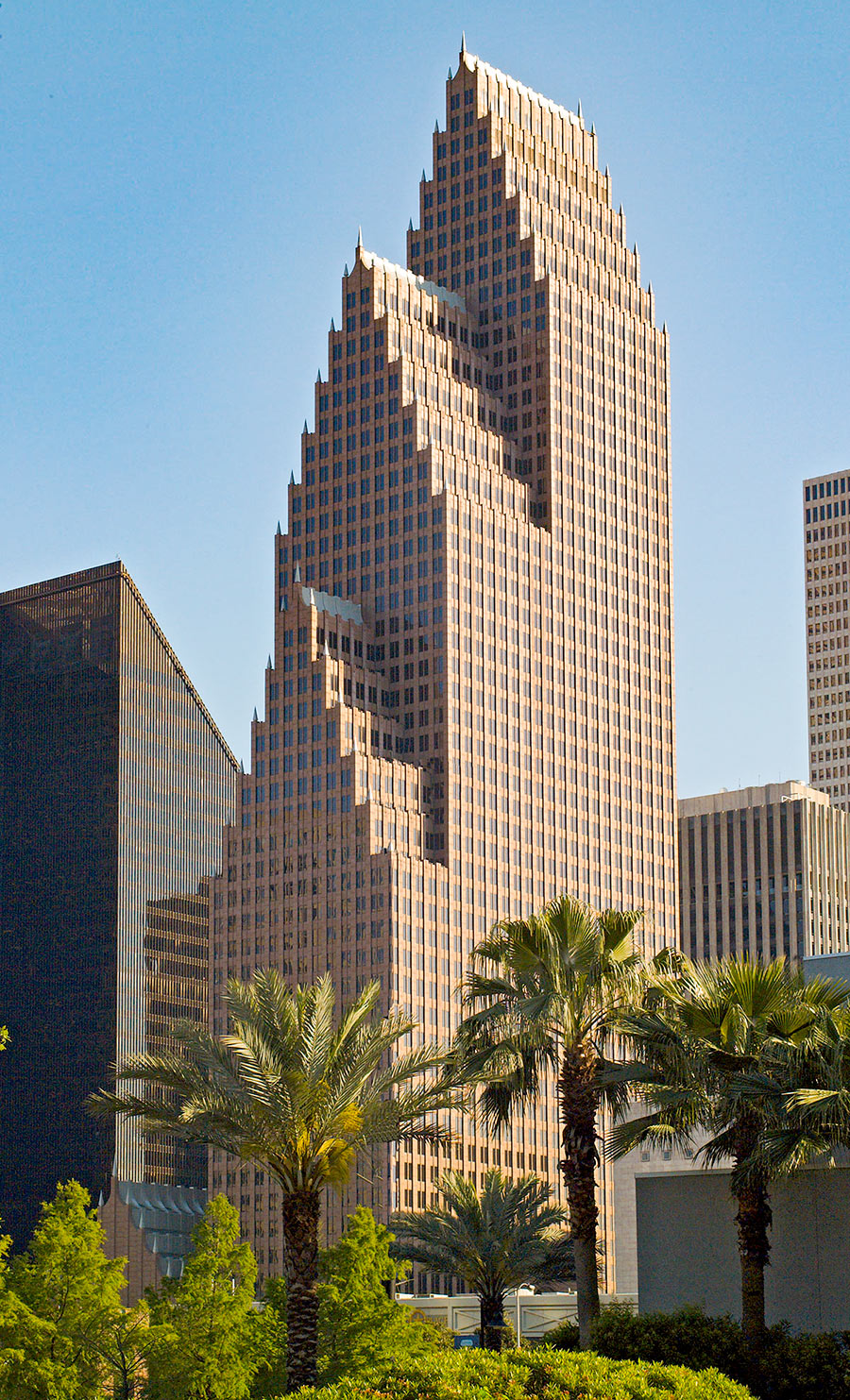
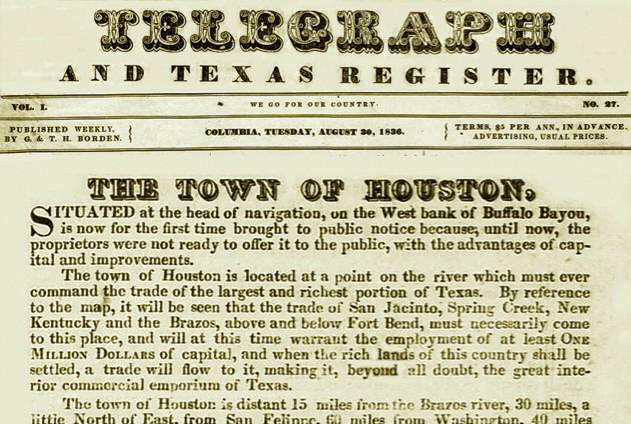 Possibly overlooked amid the Harvey hubbub: Yesterday was the City of Houston’s 181st birthday — or more accurately, the 181st anniversary of the launch of an advertising campaign announcing its establishment, pursued by the soon-to-be-city’s founding real-estate hucksters. “It is handsome and beautifully elevated,” the Allen Brothers wrote of the Houston they imagined in that ad, “salubrious and well watered, and now in the very heart or centre of population, and will be so for a length of time to come.” [
Possibly overlooked amid the Harvey hubbub: Yesterday was the City of Houston’s 181st birthday — or more accurately, the 181st anniversary of the launch of an advertising campaign announcing its establishment, pursued by the soon-to-be-city’s founding real-estate hucksters. “It is handsome and beautifully elevated,” the Allen Brothers wrote of the Houston they imagined in that ad, “salubrious and well watered, and now in the very heart or centre of population, and will be so for a length of time to come.” [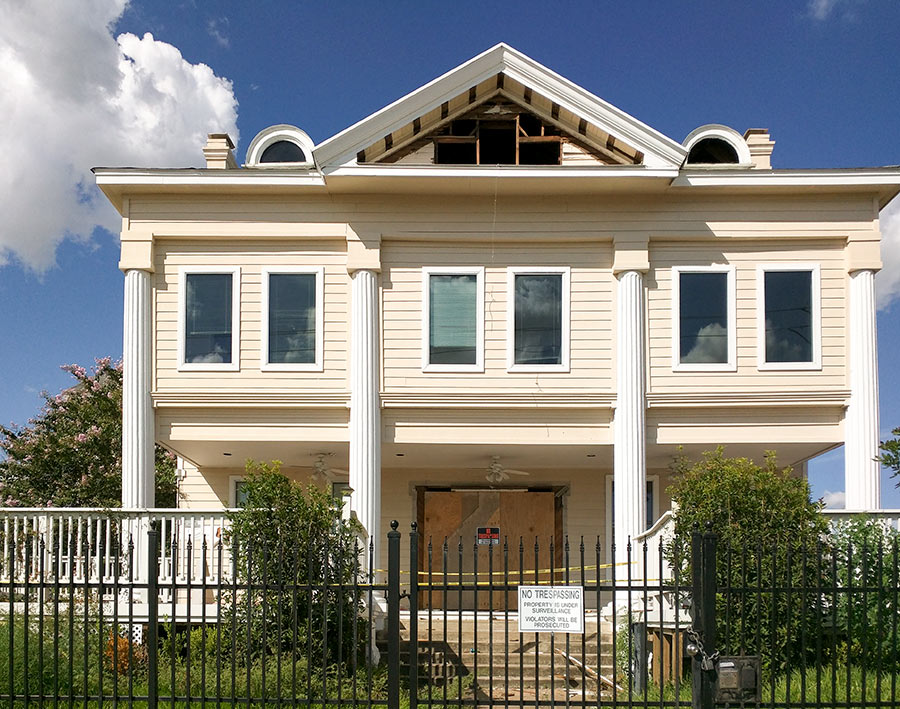
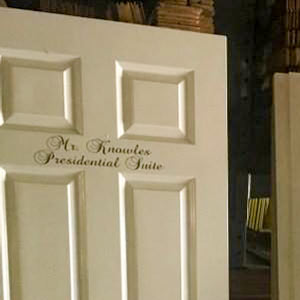
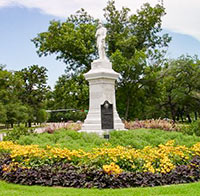 “There’s a theory that says the important thing the person is known/celebrated for should determine whether a statue stays or goes (i.e., “describe this person in 50 words or lessâ€). George Washington is not known for fighting a war with his own country-people to own slaves, but as a founding member of our country. Though he was a slave owner, it was the practice at the time. Contrast with the Confederate leaders, who rose to prominence as fighters for a practice that was known to be evil. If there are Confederate leaders who are also known for something that is to be celebrated (such as putting Lee in front of an orphanage he founded), then there’s a strong argument for keeping that statue. Otherwise it’s merely Lost Cause glorification, which isn’t historically accurate, and with most of these statues, completely out of context (e.g., middle of a park, usually reserved for someone who deserves high praise).” [
“There’s a theory that says the important thing the person is known/celebrated for should determine whether a statue stays or goes (i.e., “describe this person in 50 words or lessâ€). George Washington is not known for fighting a war with his own country-people to own slaves, but as a founding member of our country. Though he was a slave owner, it was the practice at the time. Contrast with the Confederate leaders, who rose to prominence as fighters for a practice that was known to be evil. If there are Confederate leaders who are also known for something that is to be celebrated (such as putting Lee in front of an orphanage he founded), then there’s a strong argument for keeping that statue. Otherwise it’s merely Lost Cause glorification, which isn’t historically accurate, and with most of these statues, completely out of context (e.g., middle of a park, usually reserved for someone who deserves high praise).” [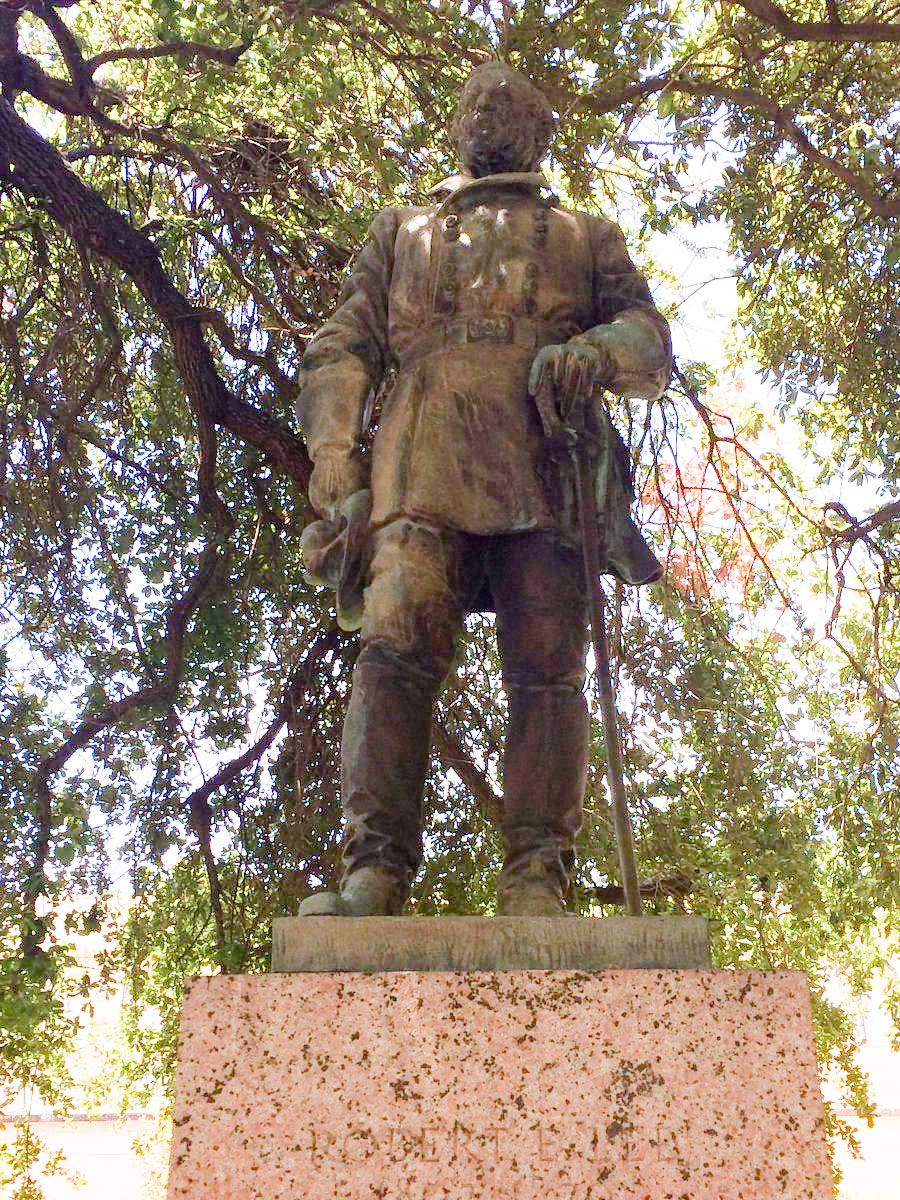
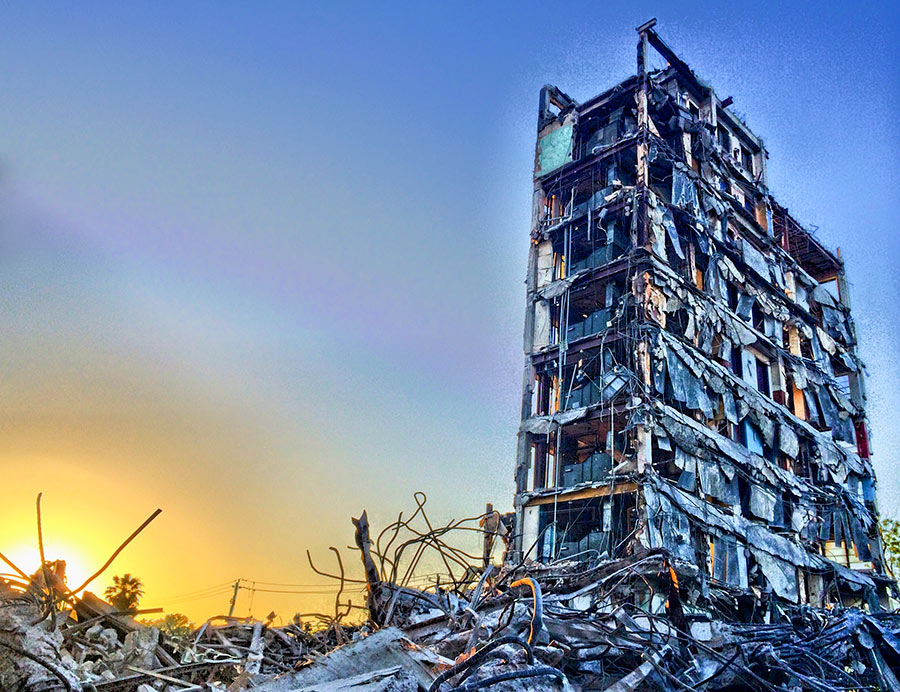
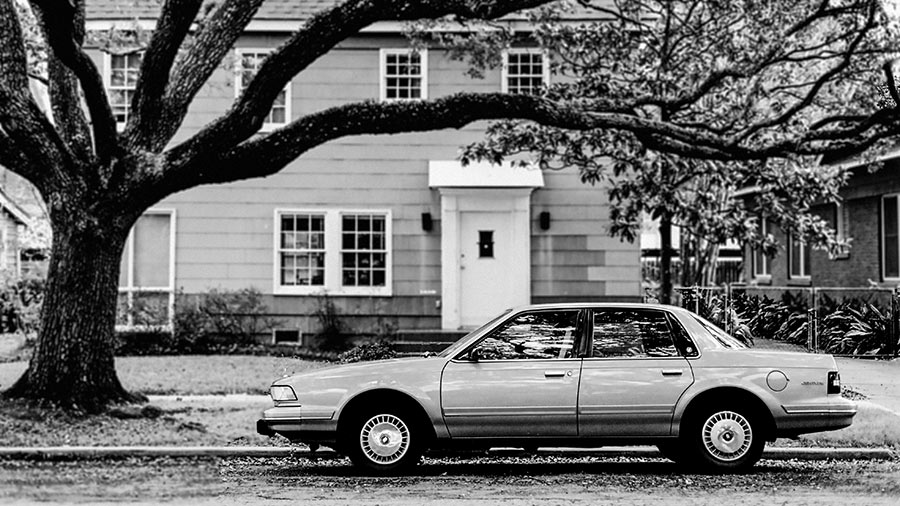 Nostalgia for Montrose’s good old days as a counterculture hub has a history almost as long and involved as the neighborhood itself, curator of Houston lore John Nova Lomax points out in a new essay for Texas Monthly. “I’ve heard generations of these death-by-gentrification declarations. Hippies might tell you it died around the time Space City! went under in 1972,” he writes (Lomax himself was “conceived in Montrose by hippie parents, in a house on the corner of Dunlavy and West Alabama.”) “There have almost always been laments about rising rents: In 1973, Montrose was featured in Texas Monthly’s third-ever issue, with folk singer Don Sanders fretting about a mass exodus of creative types brought on when area leases topped a whopping $100.” Since then, however, the losses have only mounted: “
Nostalgia for Montrose’s good old days as a counterculture hub has a history almost as long and involved as the neighborhood itself, curator of Houston lore John Nova Lomax points out in a new essay for Texas Monthly. “I’ve heard generations of these death-by-gentrification declarations. Hippies might tell you it died around the time Space City! went under in 1972,” he writes (Lomax himself was “conceived in Montrose by hippie parents, in a house on the corner of Dunlavy and West Alabama.”) “There have almost always been laments about rising rents: In 1973, Montrose was featured in Texas Monthly’s third-ever issue, with folk singer Don Sanders fretting about a mass exodus of creative types brought on when area leases topped a whopping $100.” Since then, however, the losses have only mounted: “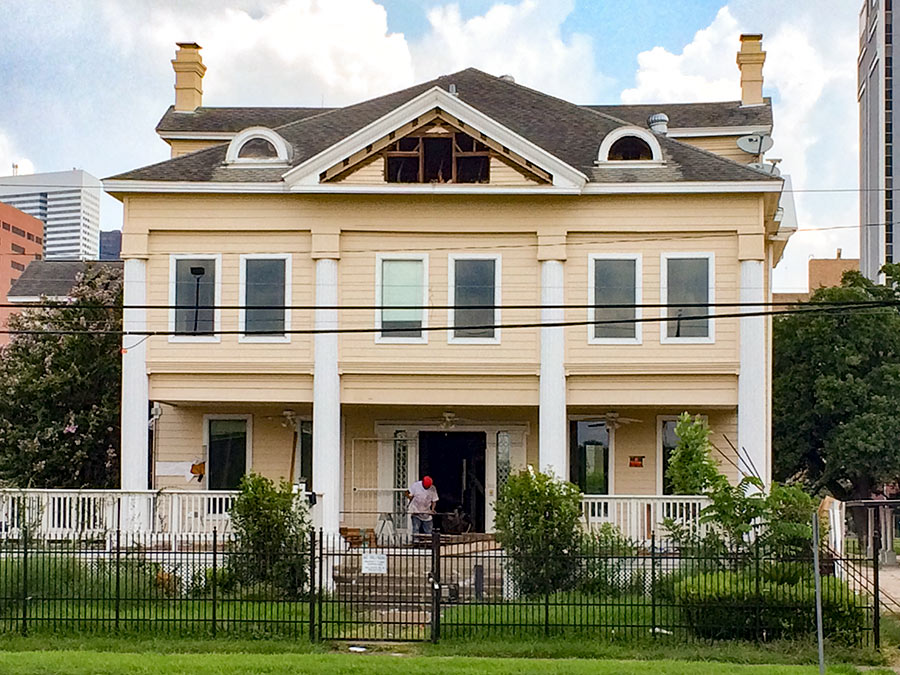
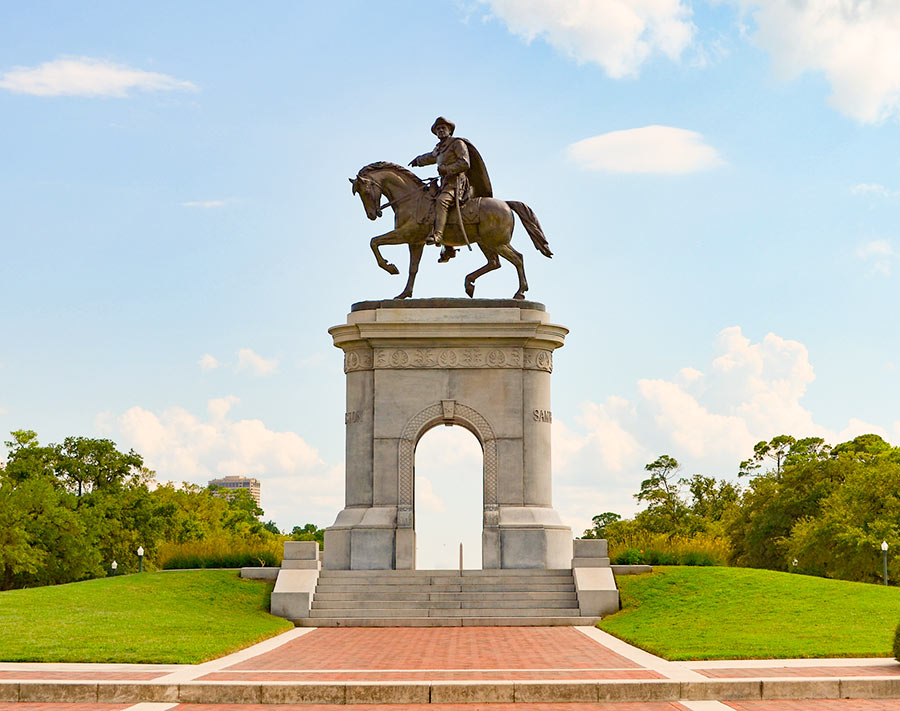 “Where, exactly, is the intersection of Sam Houston and ‘confederate history’?
March 16, 1861 — Sam Houston refuses to take the oath of the confederacy:
‘Fellow citizens, in the name of your rights and liberties, which I believe have been trampled upon, I refuse to take this oath. In the name of the nationality of Texas, which has been betrayed by the Convention, I refuse to take this oath. In the name of the Constitution of Texas, I refuse to take this oath. In the name of my own conscience and manhood, which this Convention would degrade by dragging me before it, to pander to the malice of my enemies . . . I refuse to take this oath.’†[
“Where, exactly, is the intersection of Sam Houston and ‘confederate history’?
March 16, 1861 — Sam Houston refuses to take the oath of the confederacy:
‘Fellow citizens, in the name of your rights and liberties, which I believe have been trampled upon, I refuse to take this oath. In the name of the nationality of Texas, which has been betrayed by the Convention, I refuse to take this oath. In the name of the Constitution of Texas, I refuse to take this oath. In the name of my own conscience and manhood, which this Convention would degrade by dragging me before it, to pander to the malice of my enemies . . . I refuse to take this oath.’†[